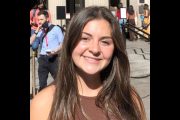
We expect our elections to occur at their appointed times. But this won’t happen with one local election after a federal judge suspended it, ruling that its format is unfair to black people.
What’s the story? The election is in a district the census informs is 48.19 percent black, and three of the seven elective seats in question are occupied by blacks. This means that if blacks had any more representation, the racial composition of a majority of those seats would reflect a minority of the population. Nonetheless, the judge, one Rodney Sippel, a federal judge for the U.S. District Court for the eastern and western districts of Missouri, deems an increase in black representation a moral imperative.
The scene of this judicial meddling is the Ferguson-Florissant School District (FFSD) — yes, that’s the Ferguson, of Michael Brown fame. The feds already have compelled the locality to socially re-engineer its police force. And now, resulting from a lawsuit by the ACLU and NAACP, the FFSD has been told it may not hold the election in question — for school board, originally scheduled for April 4, 2017 — until it satisfies Judge Sippel’s demands for reform.
This judicial abuse hasn’t received much attention; after all, most consider school board elections the watching-paint-dry segment of the electoral process. Yet consider the implications: Judge Sippel’s meddling amounts to the camel getting his nose further inside the tent. How many other judges will suspend elections in the future? And what elections will be safe?
Moreover, what passes for judicial reasoning today should give us pause. Just consider Sippel’s position, as explained by social commentator and Missouri resident Timothy Birdnow: “Judge Rodney Sippel (who, by the way, was an aid to Dick Gephardt and was appointed by Bill Clinton) wrote a rambling opinion in which he ultimately concludes that, well, blacks are underrepresented on the board because of institutional racism and are victims of such unfair practices as not allowing felons to vote or making people register at an address.” And in Sippel’s disjointed 119-page opinion was this: “The fact that the electoral process in FFSD Board elections is not equally open to African Americans is most apparent in the stark levels of racially polarized voting seen in Board elections and the failure of white voters to support candidates from the African American community.”
So not exhibiting the appropriate degree of cultural affirmative action — the phenomenon whereby people instinctively advantage so-called “victim groups” — is now considered “failure”?
It must be repeated that three of the seven school-board members are black. Nonetheless, groups do tend to exhibit certain patterns. Ninety-plus percent of blacks vote for Democrats every election; the margin with Hindus is roughly the same. And blacks tend to vote for blacks and Hispanics for Hispanics. Would the feds ever target these bias-evidencing patterns with “corrective (and coercive) action”?
Most significantly, where does the Constitution dictate that we’re entitled to representatives who reflect us racially/ethnically? And what of sex? Women are 51 percent of the population, but the vast majority of representatives are men. Will we move toward an affirmative-action electoral system in which filling seats means filling a quota?
Worse still, this un-American policy is advanced based on a false premise. This involves, as Dr. Walter Williams wrote in 2014, having “been sold on the importance of electing blacks to high public office.” He elaborated:
For several decades, blacks have held significant political power, in the form of being mayors and dominant forces on city councils in major cities such as Philadelphia, Detroit, Washington, Memphis, Tenn., Atlanta, Baltimore, New Orleans, Oakland, Calif., Newark, N.J., and Cincinnati. In these cities, blacks have held administrative offices such as school superintendent, school principal and chief of police. Plus, there’s the precedent-setting fact of there being 44 black members of Congress and a black president.
What has this political power meant for the significant socio-economic problems faced by a large segment of the black community? Clearly, it has done little or nothing for academic achievement; the number of black students scoring proficient is far below the national average.
As for black students, one of Judge Sippel’s gripes is that blacks are a majority of FFSD school attendees — 77.1 percent (whites are a plurality of the FFSD’s general population). Yet is “one man, one vote” to be replaced now with apportioning votes based on fecundity? If devout Catholics constituted only 20 percent of an area’s voting-age population but, because of their large families, accounted for a majority of its school students, would Judge Sippel manipulate the area’s elections to maximize the number of Catholics in office?
But don’t look for consistency; Sippel is engaging in free-association adjudication. As Birdnow explains:
Sippel lists the impediments to voting among black residents of the community as felony voter disenfranchisement, lack of homeownership, and other socio-economic indicators that are barriers to registration.
Essentially, he does not want choices to matter. Each and every one of his complaints with the system stem from choices. If you commit crimes, you lose the right to vote. That is a choice. If you chose not to have a permanent address — and that is often done to keep creditors at bay or to dodge those pesky landlords who want to be paid — that is your choice. If you don’t bother to register to vote in a timely manner that is your choice. (That is important; in Missouri you have to register 27 days before an election, and that is done to prevent voter fraud. Indeed, why should someone be able to move into a district and vote immediately when they have never had a vested interest in the district until now?) Frankly, the judge admits there was no evidence presented that illustrated an undue burden on black voters, which in itself should have led him to rule for the District. He simply wished this away, claiming lower rates of registration even without evidence.
What Sippel is doing, in essence, is applying “disparate impact” mentality. This principle states that if different groups perform differently on a test, it is by definition illegally discriminatory and must be scrapped. It’s the angle that has been used to eliminate police fitness requirements on the basis that women couldn’t satisfy them as frequently as men could. Case in point: Obama’s Department of Justice sued the Pennsylvania State Police in 2014 for treating men and women equally.
If that sounds crazy, consider that a “cure” proposed for the imaginary FFSD disease was to give each resident multiple votes. Called “cumulative voting,” the idea is that the minority community can pool their votes and thus elect some candidates with their skin color or ethnicity. And this has been done before. In 2006, the DOJ accused the village of Port Chester, New York, of discrimination because, while the locality was almost half Hispanic, all of its government trustees were non-Hispanic whites. It didn’t matter that Hispanics constituted only 20 percent of the voting-age population; a judge nonetheless forced Port Chester to give every resident six votes.
Notable here is not only that this was never done decades ago for other groups, such as Americans of Italian or Irish descent, but that this scheme presupposes that whites will exhibit far less group bias than other groups. After all, if they also pooled their votes, cumulative voting couldn’t yield a different outcome.
This judicial undermining of our election process should serve as a warning to everyone. All throughout the nation, blacks and Hispanics are less involved electorally for the choice-related reasons mentioned earlier. Thus, FFSD and Port Chester are not unique. Sippel’s rationale could be applied anytime, in any place with similar demographics — which means that judicial social engineering could soon come to a town near you.



